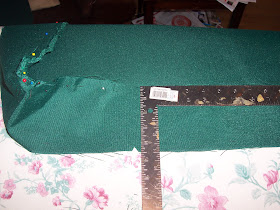Fast forward a few years and Bill sees a boat for sale on E-bay that looks remarkably similar to Phoenix. This was a ferro-cement hull rather than fiberglass like ours, but the design similarities were striking! That boat – Eager Dreamer (ED) – is a Bruce Bingham 48’ Andromeda ketch. Armed with a few key pieces of information from the ad, Bill and I set out to unravel the mystery behind Phoenix's origins.
We decided to divide and conquer. Bill discovered that ED was built in Seattle by a man named Gary Wiles, and found his contact info online. I hit the message boards and found that Bruce Bingham is living in Florida and got his contact info. Bill called them both and what we learned excited us both!
Phoenix is, in fact, a Bruce Bingham Christina (similar to an Andromeda), and 1 of only 2 ever made in the factory under Bruce's supervision. For all intents and purposes, she is hull #1 of the 2, and was commissioned with an additional 6 foot bowsprit and staysl rig. There are other Andromeda's out there, but none built under Bruce’s watch. The hull was made in Korea, and she was shipped to Seattle where she was finished and delivered. Gary saw her there in 1976, and she was the inspiration that led him and his wife Lana to build ED!
Bruce's book entitled, Ferro-Cement, is almost an "Andromeda manifesto" as I like to call it, and he spends a good part of the introduction discussing his then-current philosophy on boat design that culminated in the Andromeda. Gary was kind enough to send us copies of the original blue prints which gave us invaluable pieces of Phoenix's puzzle.
Phoenix has had several owners, a hand full of names, and many modifications over the years. We've seen remnants of bulkheads, shoveled out bags full of woodchips and epoxy that settled in her keel, and uncovered a variety of paint colors as we completed the re-decking and paint job. But now we could really see where she came from, and amazingly that many of our modifications hark back to her original design!
Bill contacted her previous owner Dieter to share the news, and he in turn offered pictures of the boat from the mid-90s. At that point her teak decks had be replaced with Ipe (aka Brazilian walnut). The compromised foredeck had been leaking badly, and Dieter ripped all of the Ipe -- and even the cabin tops -- off the boat. Dieter re-beamed the foredeck and began a Herculean attempt at reviving the boat before running out of steam and putting her on the market.
 |
| The Ipe and cabin tops ripped off! |
 |
| View of the main cabin from the deck... |
 |
| How she looked when we got her |
We picked up where Dieter left off and are rounding the corner towards her completion. Bruce, Gary and Lana will most likely be here visiting this summer, and with any luck she will be ready to sail for our honored guests. At 36 years old, it is time for Phoenix to rise and shine!
 |
| Phoenix today |













